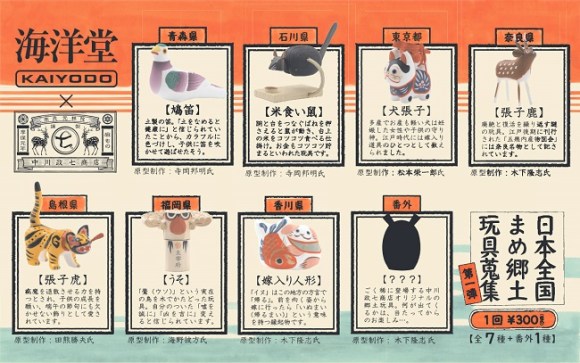
No matter how the times change, kids still love toys. Whether it was ancient Egypt or the mid-Edo period, toys have always been a big part of the way children passed their time in play. Even with all our fancy technology today, from 3DSs to Oculus Rifts, kids still make time to run around with their favorite dolls or plastic guns. Of course, Japan is full of figures of all varieties and price tags, but gachapon occupy a position of near invincibility–you can put pretty much anything in those little plastic balls and they’re practically guaranteed to sell.
And, starting soon, you’ll also be able to buy remakes of traditional Japanese toys from the early 18th century. You’ll finally get the opportunity to play like a kid from the Edo Period while waiting for your 3DS to recharge!
Produced by Kaiyoudo and Nakagawa Masashichi Shoten Co., Ltd., a company with a history stretching back to the 1700s, these toys perfectly complement Nakagawa’s mission to “revitalize Japanese crafts.” The eight figures (one remains a mystery) are based on traditional toys from Japan’s various prefectures. Though only eight pieces will be made available at the end of October, the goal is to eventually release figures representative of each of Japan’s 47 prefectures.
The seven figures, pictured above, come from Shimane, Aomori, Fukuoka, Nara, Kagawa, Ishikawa, and Tokyo, respectively. The traditional toys often had religious significance, like the tiger (called a “hariko tora”) from Shimane, which was believed to keep illness away and was given to children to ensure they’d grow. The “uso” (a homonym for “bullfinch” and “lie”) from Fukuoka was a wooden toy designed to look like a bird and was believed to turn “lies into truth” and “bad luck into good luck.”
This colorful bird toy from Aomori above is called a “hatobue,” which literally means “pigeon whistle.” The traditional toy was, as you have probably figured out, a whistle for children. We can only imagine how many were “accidentally lost” by annoyed parents almost three hundred years ago!
The “inu hariko” pictured above is the Tokyo toy and is actually supposed to be a dog, though you can be forgiven for thinking it was a cat like we did! Dogs were considered guardian deities for pregnant women and children, since dogs often and easily gave birth.
Naturally, Nara’s representative toy is a deer, called a “hariko shika.” The deer were representative of the cycle of death and rebirth.
While the original toys were made of wood or papier-mâché (hariko means papier-mâché), based on these photos of the unpainted toys, it looks like Nakagawa’s gachapon versions are plastic. While that’s a bit of a bummer, we can’t really complain–they only cost 300 yen (US$2.80) each! Of course, you’ll be getting them at random, so who knows how much you’ll actually have to spend to get a full set…
▼Note the mystery toy at the top right…could that be Totoro?
▼The seven figures painted and arranged in a display case.
Currently, the gachapon toys are set to be released at the end of October, so you have plenty of time to save up your 100 yen coins! Right now, our favorite is definitely the uso toys–there’s nothing we love quite as much as a good pun!
Sources: ITMedia, Nakagawa Masashichi Shoten Co., Ltd., Nakagawa Masashichi Shoten Co., Ltd. (English)
Images: Nakagawa Masashichi Shoten Co., Ltd.

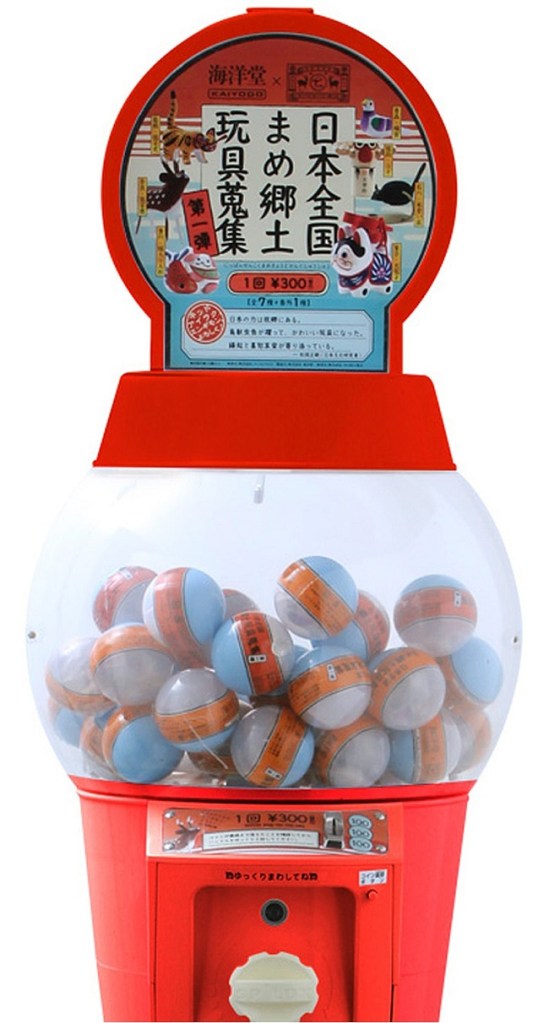
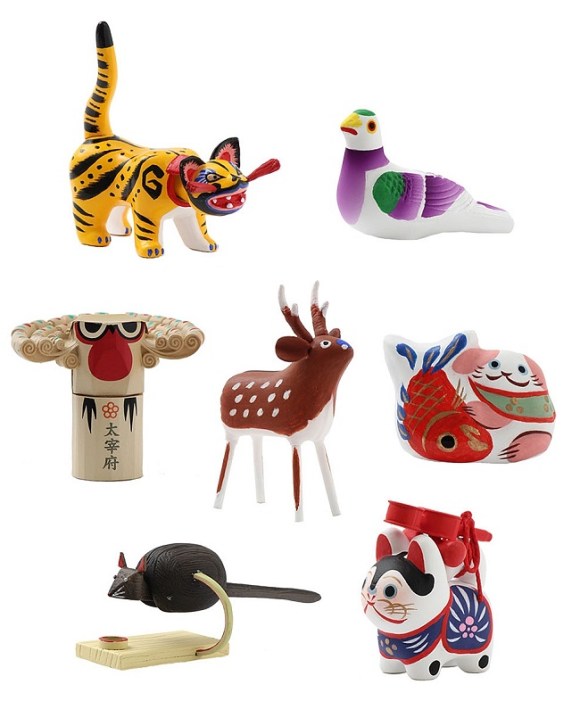


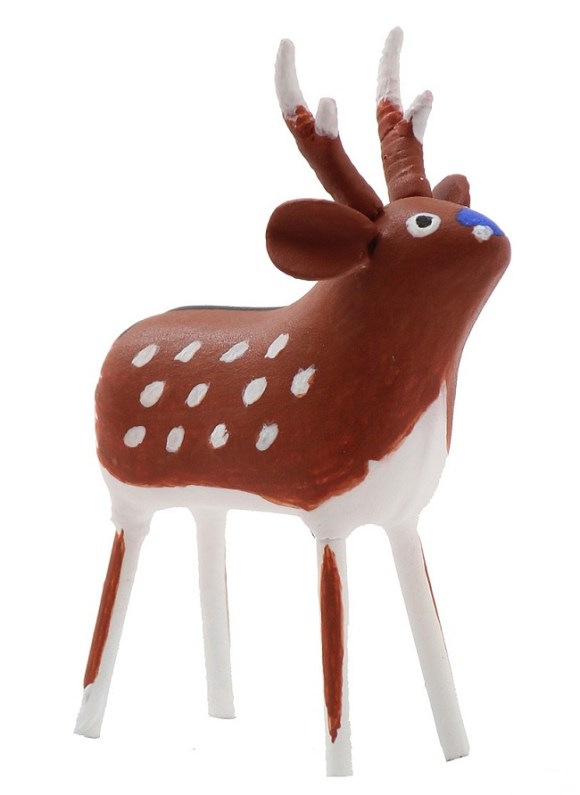
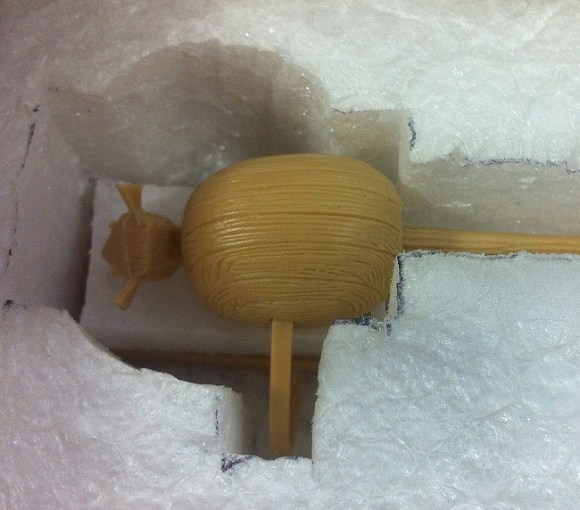
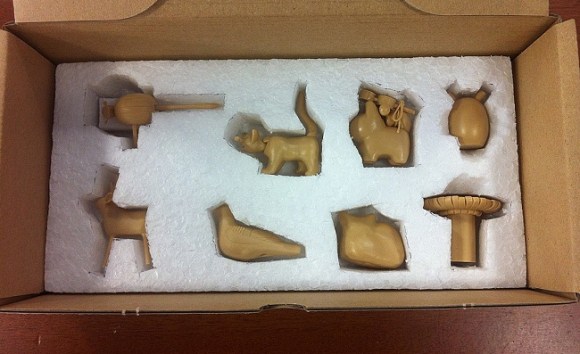
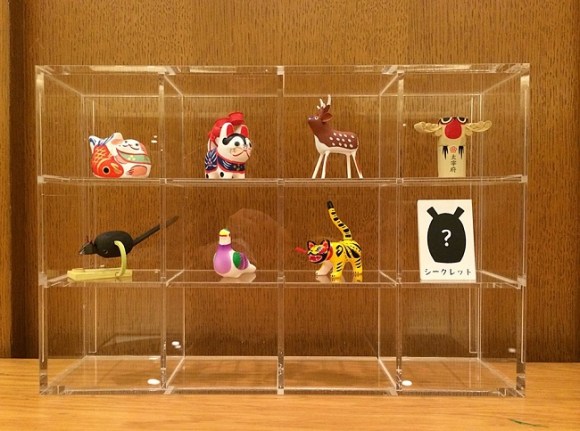
 Tiny Buddhist statues: These new gachapon figures are more pious than adorable!
Tiny Buddhist statues: These new gachapon figures are more pious than adorable! New gachapon figures from Japan imagine a romance beyond bathroom boundaries
New gachapon figures from Japan imagine a romance beyond bathroom boundaries New gachapon set introduces capsule toy cat toys for your capsule toy cats!
New gachapon set introduces capsule toy cat toys for your capsule toy cats! Super-expensive capsule toys – Trying out Japan’s Premium Gachapon machine【Photos】
Super-expensive capsule toys – Trying out Japan’s Premium Gachapon machine【Photos】 Father and son dissect a gachapon capsule toy machine to show us its magical insides【Video】
Father and son dissect a gachapon capsule toy machine to show us its magical insides【Video】 Starbucks Japan ready to get Year of the Horse started with adorable drinkware and plushies【Pics】
Starbucks Japan ready to get Year of the Horse started with adorable drinkware and plushies【Pics】 More Than a Capsule Stay: Why Solo Travelers Choose “global cabin Yokohama Chinatown”
More Than a Capsule Stay: Why Solo Travelers Choose “global cabin Yokohama Chinatown” New Japanese menstrual product seeks to help women spot unidentified iron deficiencies
New Japanese menstrual product seeks to help women spot unidentified iron deficiencies Spy on a hot prisoner with amnesia in Capcom’s new mobile romance sim
Spy on a hot prisoner with amnesia in Capcom’s new mobile romance sim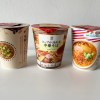 Taste-testing Japan’s three biggest convenience stores store-brand cup ramen【Taste test】
Taste-testing Japan’s three biggest convenience stores store-brand cup ramen【Taste test】 Train continues to stop at rural station for lone schoolgirl until she graduates in March
Train continues to stop at rural station for lone schoolgirl until she graduates in March Reveal your inner fashion samurai with traditional clothes for the modern world
Reveal your inner fashion samurai with traditional clothes for the modern world We found possibly the quietest Japanese-style hotel in Tokyo’s bustling Shinjuku district
We found possibly the quietest Japanese-style hotel in Tokyo’s bustling Shinjuku district “Denki Anma”: The Japanese traditional torment that you’ll be glad stays in Japan
“Denki Anma”: The Japanese traditional torment that you’ll be glad stays in Japan The etiquette rules for visiting Shinto shrines in Japan
The etiquette rules for visiting Shinto shrines in Japan Disillusionment at Tsukiji’s tourist-target prices led us to a great ramen restaurant in Tokyo
Disillusionment at Tsukiji’s tourist-target prices led us to a great ramen restaurant in Tokyo Japan may add Japanese language proficiency, lifestyle classes to permanent foreign resident requirements
Japan may add Japanese language proficiency, lifestyle classes to permanent foreign resident requirements Lacquerware supplier to emperor of Japan and Pokémon team up for new tableware
Lacquerware supplier to emperor of Japan and Pokémon team up for new tableware Starbucks Japan releases new zodiac chilled cup drink for 2026
Starbucks Japan releases new zodiac chilled cup drink for 2026 7-Eleven Japan’s ramen-cooking robot whipped us up a bowl of noodles【Taste test】
7-Eleven Japan’s ramen-cooking robot whipped us up a bowl of noodles【Taste test】 Cyberpunk anime meets traditional culture in Ghost in the Shell gold leaf Japanese changing screens
Cyberpunk anime meets traditional culture in Ghost in the Shell gold leaf Japanese changing screens 7 great places to see Mt. Fuji from without having to climb it
7 great places to see Mt. Fuji from without having to climb it Hello Kitty Choco Egg figures are an adorable trip through three periods of Japanese pop culture【Pics】
Hello Kitty Choco Egg figures are an adorable trip through three periods of Japanese pop culture【Pics】 Japan’s otoshidama tradition of giving kids money at New Year’s gets a social welfare upgrade
Japan’s otoshidama tradition of giving kids money at New Year’s gets a social welfare upgrade Japan’s human washing machines will go on sale to general public, demos to be held in Tokyo
Japan’s human washing machines will go on sale to general public, demos to be held in Tokyo 7-Eleven Japan starts new temporary luggage storage service in over 300 branches
7-Eleven Japan starts new temporary luggage storage service in over 300 branches Starbucks teams up with 166-year-old Kyoto doll maker for Year of the Horse decorations【Photos】
Starbucks teams up with 166-year-old Kyoto doll maker for Year of the Horse decorations【Photos】 Tokyo considering law requiring more trash cans following litter increase in heavily touristed area
Tokyo considering law requiring more trash cans following litter increase in heavily touristed area Tokyo’s Tsukiji sushi neighborhood asks tour groups to stay away for the rest of the month
Tokyo’s Tsukiji sushi neighborhood asks tour groups to stay away for the rest of the month Nintendo’s Kirby now delivering orders at Kura Sushi restaurants, but not in Japan
Nintendo’s Kirby now delivering orders at Kura Sushi restaurants, but not in Japan Tokyo event lets you travel back in time, for free, to celebrate 100 years since Showa era start
Tokyo event lets you travel back in time, for free, to celebrate 100 years since Showa era start Sanrio theme park in Japan announces plans to expand into a Sanrio resort
Sanrio theme park in Japan announces plans to expand into a Sanrio resort Stamina-destroying “Paralysis Noodles” are Tokyo’s newest over-the-top ramen innovation
Stamina-destroying “Paralysis Noodles” are Tokyo’s newest over-the-top ramen innovation Survey asks foreign tourists what bothered them in Japan, more than half gave same answer
Survey asks foreign tourists what bothered them in Japan, more than half gave same answer Japan’s deadliest food claims more victims, but why do people keep eating it for New Year’s?
Japan’s deadliest food claims more victims, but why do people keep eating it for New Year’s? We deeply regret going into this tunnel on our walk in the mountains of Japan
We deeply regret going into this tunnel on our walk in the mountains of Japan Studio Ghibli releases Kodama forest spirits from Princess Mononoke to light up your home
Studio Ghibli releases Kodama forest spirits from Princess Mononoke to light up your home Major Japanese hotel chain says reservations via overseas booking sites may not be valid
Major Japanese hotel chain says reservations via overseas booking sites may not be valid Put sesame oil in your coffee? Japanese maker says it’s the best way to start your day【Taste test】
Put sesame oil in your coffee? Japanese maker says it’s the best way to start your day【Taste test】 No more using real katana for tourism activities, Japan’s National Police Agency says
No more using real katana for tourism activities, Japan’s National Police Agency says The top 10 annoying foreign tourist behaviors on trains, as chosen by Japanese people【Survey】
The top 10 annoying foreign tourist behaviors on trains, as chosen by Japanese people【Survey】 Starbucks Japan reveals new sakura drinkware collection, inspired by evening cherry blossoms
Starbucks Japan reveals new sakura drinkware collection, inspired by evening cherry blossoms No, we didn’t stutter. New Sailor Moon gachapon toys really are compact compacts
No, we didn’t stutter. New Sailor Moon gachapon toys really are compact compacts Creepy or cute? Come face to face with deep sea creatures as gachapon sushi toys!!
Creepy or cute? Come face to face with deep sea creatures as gachapon sushi toys!! No coins? Not a problem for Japan’s new cashless gachapon capsule toy vending machines
No coins? Not a problem for Japan’s new cashless gachapon capsule toy vending machines New gachapon figures of Choju-giga animals are the perfect way to decorate your afternoon drink!
New gachapon figures of Choju-giga animals are the perfect way to decorate your afternoon drink! Retired pro wrestler Riki Choshu greets you at the door in this new line of sound gachapon toys
Retired pro wrestler Riki Choshu greets you at the door in this new line of sound gachapon toys Beat your phone into submission with these Street Fighter 2 capsule toy stands
Beat your phone into submission with these Street Fighter 2 capsule toy stands New gachapon vending machine capsule toy range features miniature sweaters for water bottles
New gachapon vending machine capsule toy range features miniature sweaters for water bottles Japan’s new tiny ninja capsule toy collection turns your desk into a secret hideout
Japan’s new tiny ninja capsule toy collection turns your desk into a secret hideout Mysterious hand figures turn out to be our new favourite Japanese capsule toys
Mysterious hand figures turn out to be our new favourite Japanese capsule toys New Japanese gacha capsule vending machine toys bring you sheep’s clothing to dress your cats in
New Japanese gacha capsule vending machine toys bring you sheep’s clothing to dress your cats in Make your kancho dreams a kancho reality with new, interconnecting KAN-CHO figures【Pics】
Make your kancho dreams a kancho reality with new, interconnecting KAN-CHO figures【Pics】 Photos of Complete Strangers: Japan’s new strange, and strangely compelling, capsule toys【Pics】
Photos of Complete Strangers: Japan’s new strange, and strangely compelling, capsule toys【Pics】
Leave a Reply